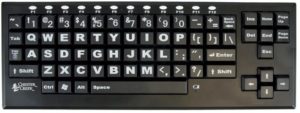The room, or a replica of it, was a sad reminder of the brilliant surgeon and scholar.
He had produced some of the finest medical papers in his time. He had made tremendous strides forward in the field of advanced levels of neuro-communication. Now, in the city’s science museum, the room was a testimony to the man and his work. Students from all over the world came here and passed through in small groups to witness in physical terms, the man’s life. On the desk they could see the very pen that he used to write so many of his papers. Beside it, the strap that was used to keep the pen held in place when his grip became too week to hold it in the normal fashion. Next to this, a larger strap with a pad of high friction rubber to enable the hand to press down to steady it while writing. It had been developed at a time when his hands became susceptible to constant shaking.

On a small credenza beside the desk, his keyboard, with the oversized keys to cope with his inability to write using his hands and his failing eyesight. The apparatus next to this, the voice recognition microphone and associated software used when he could no longer write or type. Lastly, when he lost the power of speech, the first ground-breaking version of his head net, designed to emit thoughts that were sent to an electronic receiver screen where they would appear. Here, the students are told of the many stages of advancement during the last few years of the man’s life. The final segment of their time in the room was given over to choosing one of the party to don the head net. This would be a demonstration of how thoughts were sent to the screen fixed to the wall behind the desk.
However, on this occasion, before the selected student could actually place the neuro net on his head, words began to appear on the screen…